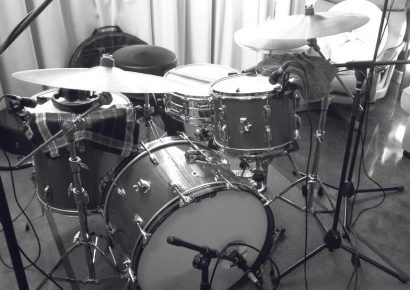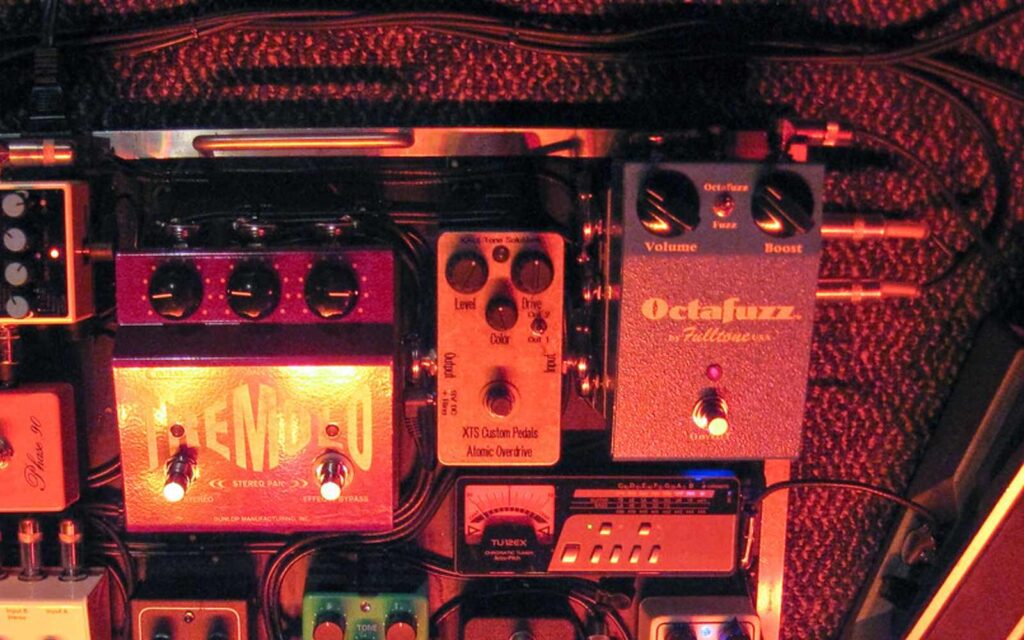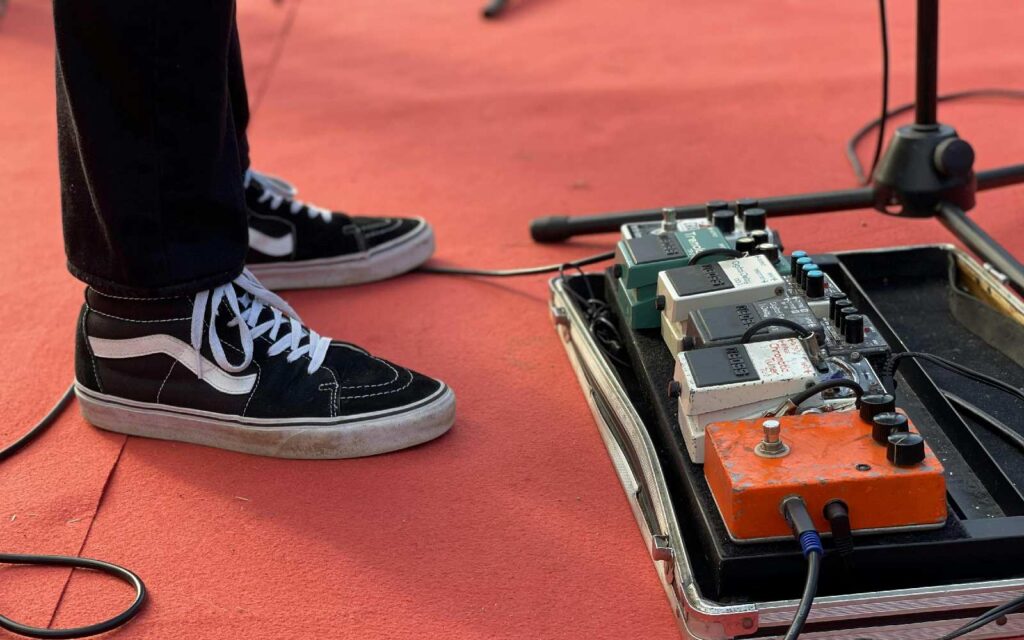Create a repeating pattern to handle the low end, and then add a sustained note to cover the middle range, or use a harmonic instead to get right up there to the high range. You can move the bass notes around, you can shift the higher notes anywhere you like, you can add chords or whatever gets you to the heart of the song. Personally I stumbled upon this stuff when listening to my brother playing sustained arpeggios on his bass. I thought “That’s really cool, but the sound could get a bit mushy if you’re letting every note ring out in a band situation.” Then I blended it with an idea I stole from a Virgil Donati drum clinic, implying that a repeating pattern is continuing even when you diverge from it.
Figure 1 will give you the basic idea. There’s a simple pattern which takes place on the low E string and consists of only two notes (E and G). On top we add an open D string in the first two bars, which we let ring out. Then in the next two bars we switch it to a B note on the second fret of the A string. Now, the idea of having two notes on the low E string isn’t just for physical convenience. If we were playing wider arpeggios we could risk having each note ring out at the same time, and that could turn into mush, especially if the intervals are relatively close together.
Figure 2 takes this idea but adds harmonics for the sustained notes. In this case we’re playing the harmonic over the fifth fret of the D string for the first two bars, giving us a G note (and you can cross-reference this with any other G on your bass to make sure you’ve nailed the right harmonic). Then switch to the F# harmonic above the 4th fret for the other two bars. This totally changes the tonality of the riff and gives you a nice spacious sound which carries rhythmic and harmonic information at the same time, making it great for another instrumentalist to solo over or to play something more textural.
Figure 3 uses simple two-note chords instead, while keeping the same bass pattern on the bottom. In this case we repeat the same chord (an E5) for the first two bars, then a D5 for the third bar and a C5 for the last one. Again it’s a totally different harmonic movement to the other two examples, so you should have plenty here to mess around with before you start working on your own ideas.






